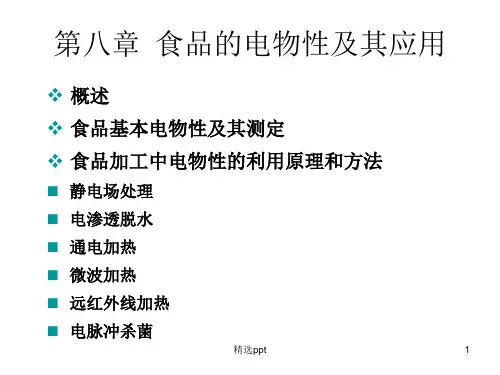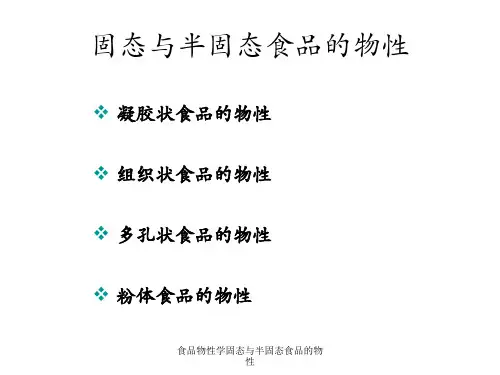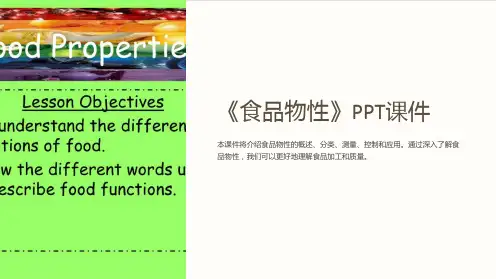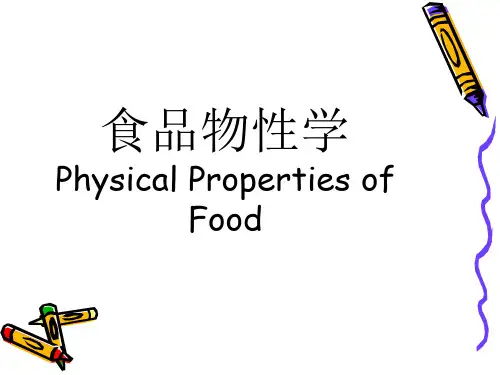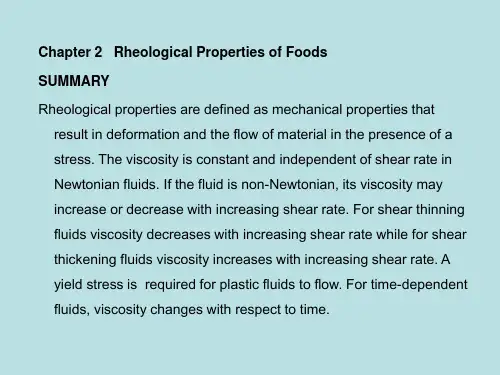Chapter 2 Rheological Properties of Foods SUMMARY Rheological properties are defined as mechanical properties that
result in deformation and the flow of material in the presence of a stress. The viscosity is constant and independent of shear rate in Newtonian fluids. If the fluid is non-Newtonian, its viscosity may increase or decrease with increasing shear rate. For shear thinning fluids viscosity decreases with increasing shear rate while for sosity increases with increasing shear rate. A yield stress is required for plastic fluids to flow. For time-dependent fluids, viscosity changes with respect to time.
Capillary flow, orifice type, falling ball, and rotational viscometers are the most commonly used viscometers to measure viscosity of materials. Foods showing both elastic and viscous components are known as viscoelastic foods. Viscoelastic materials can be determined by stress relaxation test, creep test, and dynamic test.
